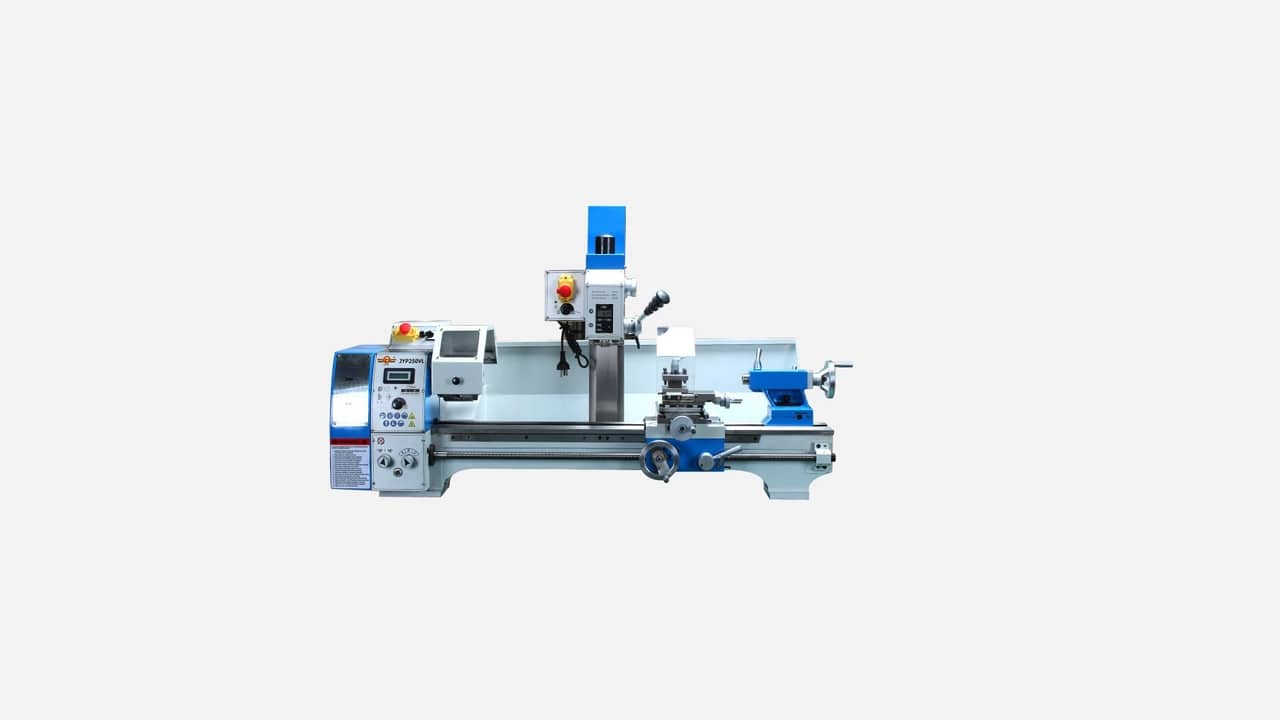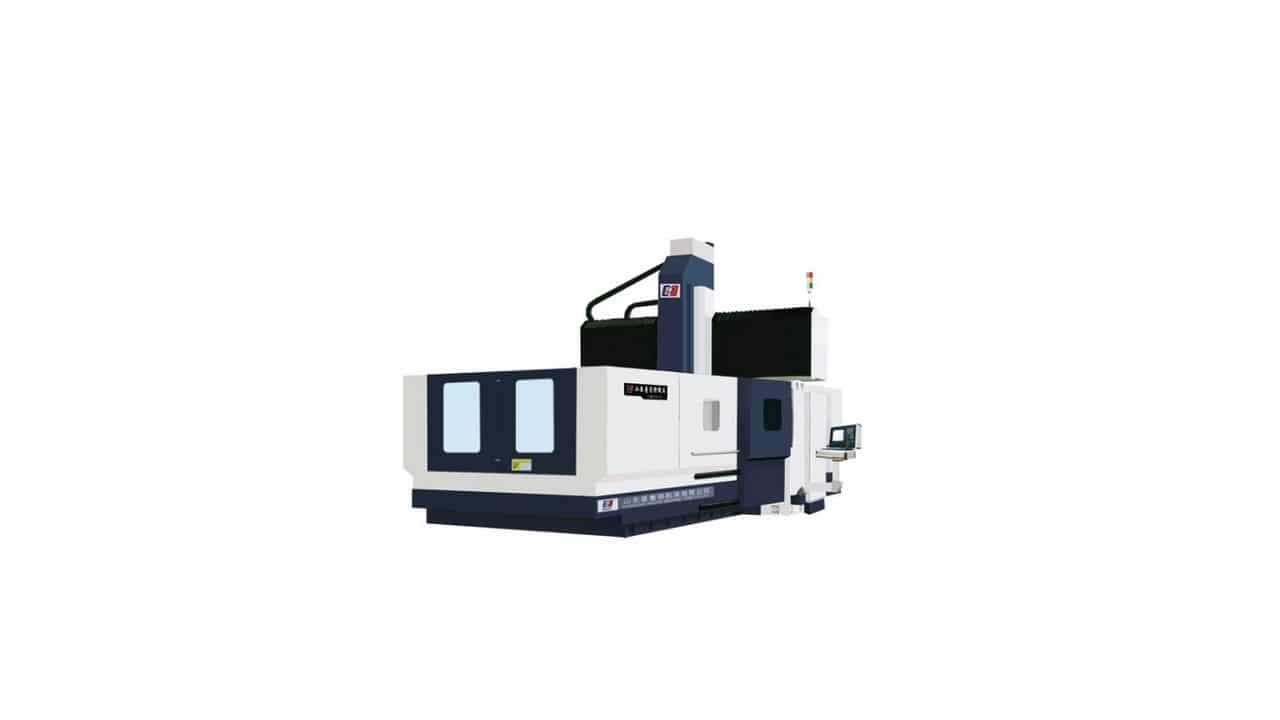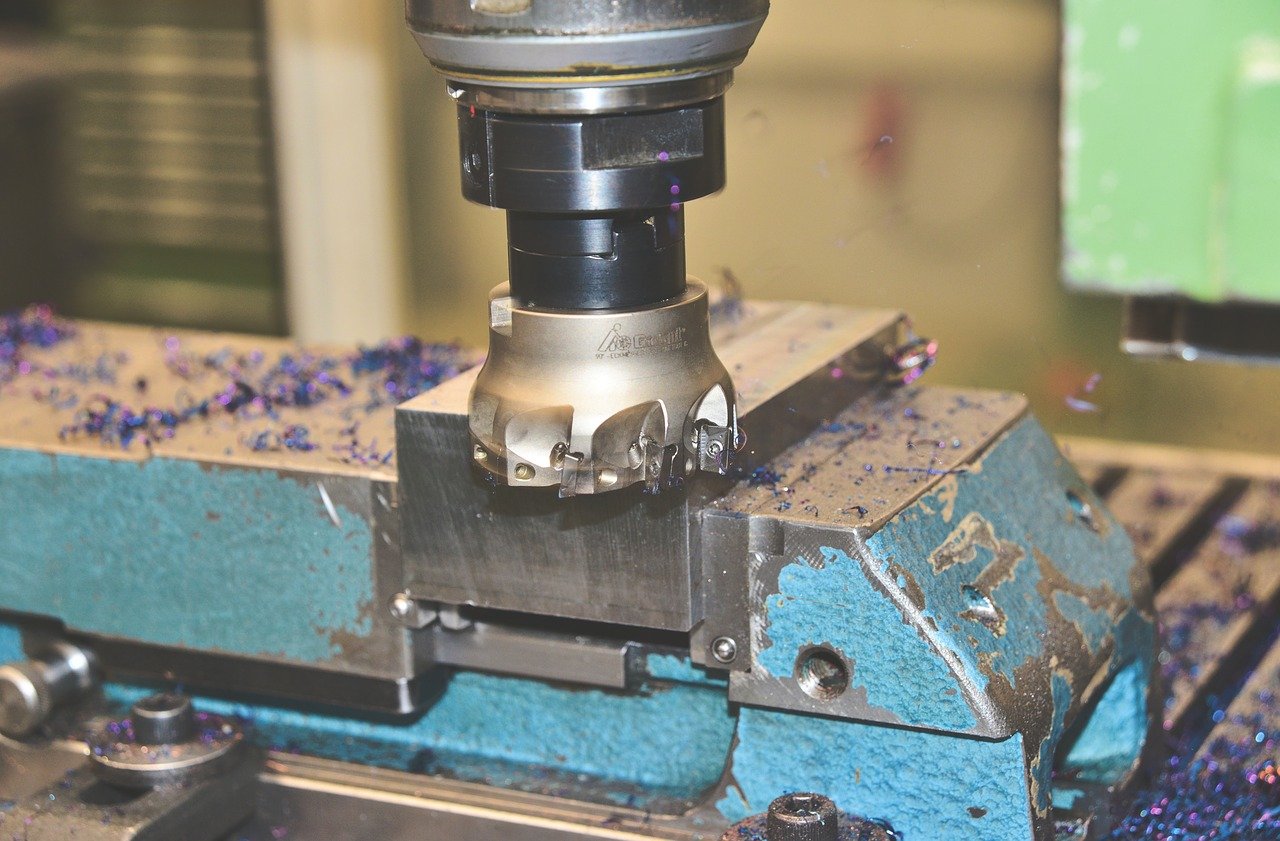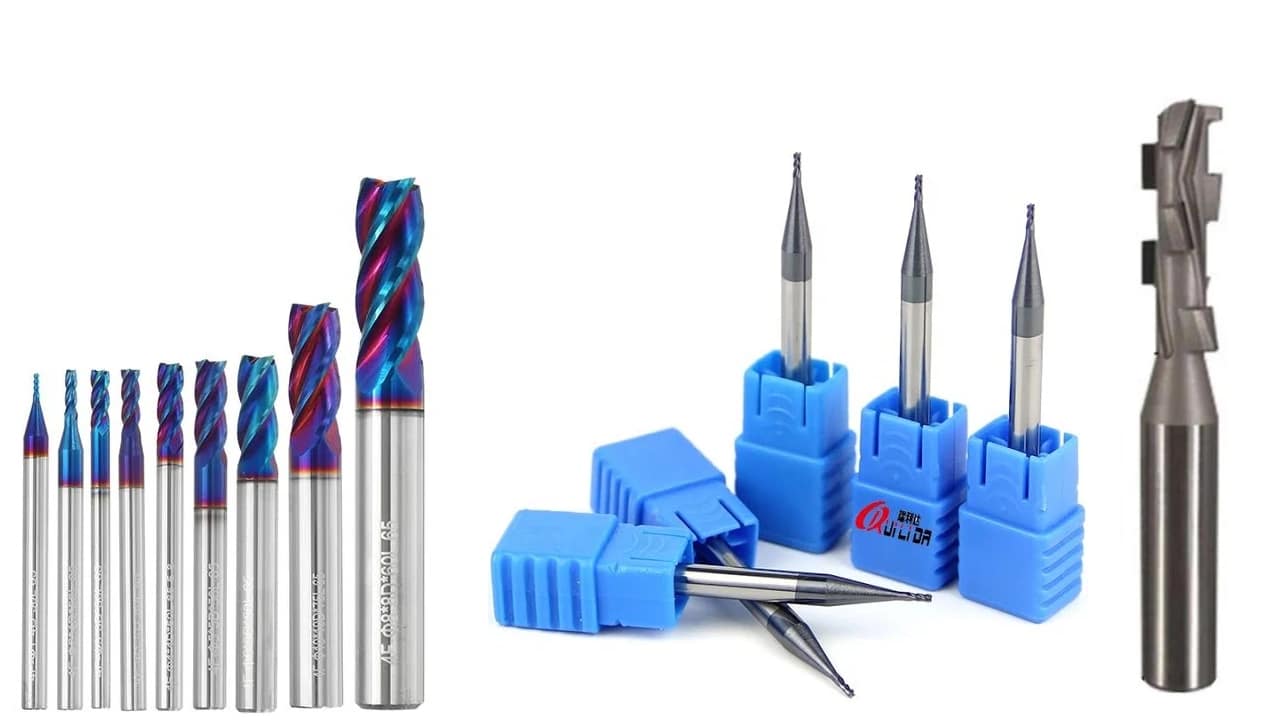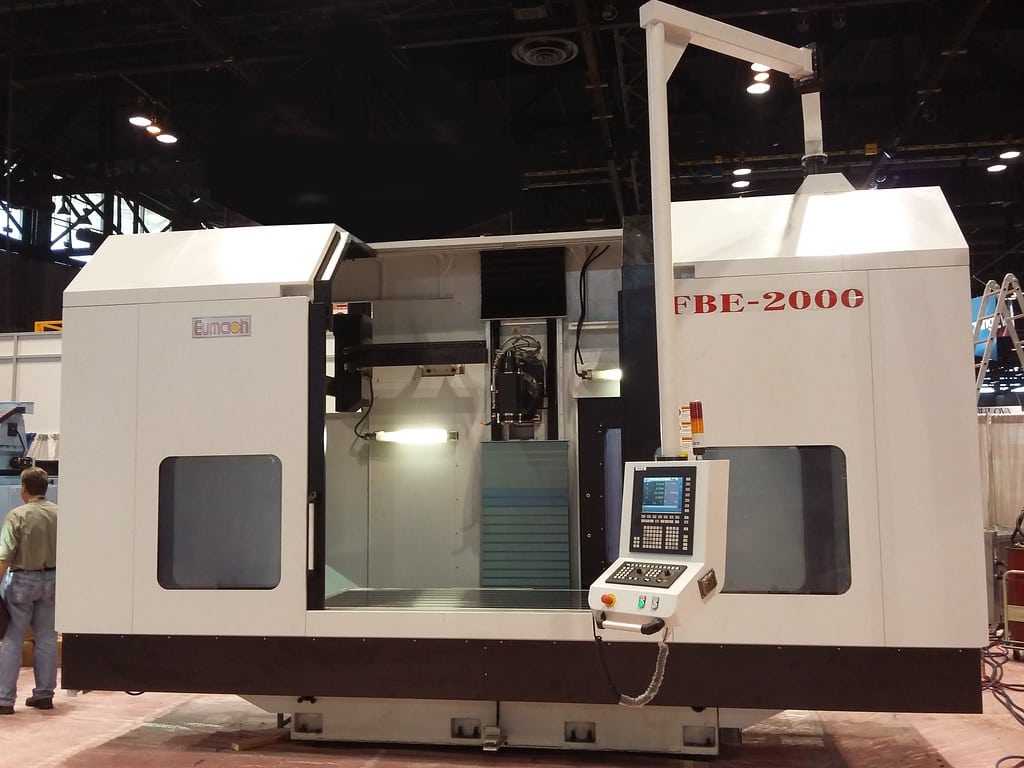
Another of the types of CNC machines if we look at the functions, or type of work carried out on the part, are CNC milling machines. They may look quite similar to cnc lathes, but they are not identical. Although milling cutter-type tools can also be used on the lathe, it is not the same machine. For example, the CNC milling machine does not have to rotate the part at high revolutions, it can carry out its work on one of the faces of the part, etc.
Here you know all the details so that you have no doubt, and even know which are the best CNC milling machines to make a master purchase for your business or for hobby use.
| The best |

|
ANNOY TOOLS - Milling machine... | See features | View deals |
| Price quality |
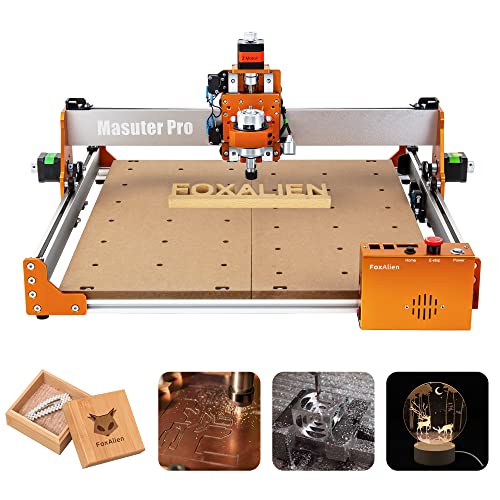
|
FoxAlien Machine... | See features | View deals |
| Our favorite |

|
Update The CNC 3018 Pro... | See features | View deals |
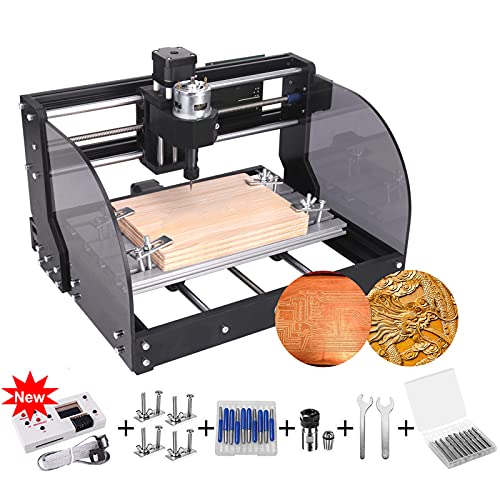
|
Updated TwoWin CNC... | See features | View deals |
The best CNC milling machines
If you want to start your first projects with a CNC milling machine, or use it for professional use, you should attend to these recommendations:
Fetcoi 6040T 4 Axis CNC Milling Machine
This CNC milling machine is a compact device, with the ability to connect to a PC via a USB cable. With it you can work a multitude of pieces, both aluminium, copper, silver, acrylic, ABS resin, PVC foam, wood, plywood and MDF, etc. It is an ideal machine for hobbyists or small-scale professional use, for example to set up a small workshop at home. In addition, it contains a water-cooled VFD, a 1.5 kW motor,
Kaibrite 3040 3-Axis CNC Milling Machine
This other CNC milling machine has similarities to the previous one, only it has only 3 axes in this case. It also connects easily via USB to a PC. And it can process a wide variety of materials, such as glass, wood, stone, metal, ETC. It has a very stable bed, and a powerful spindle motor. It has been reinforced to prolong its reliability, and it also has a very compact size.
SainSmart Genmitsu CNC 3018-PRO
This brand has a 3-axis CNC milling machine for acrylic plastic, aluminum, PVC, PCB, and wood. It is very economical and compact, and its elements allow them to be housed more freely, so that space is not a problem. It has good stability, open source GRBL software, also runs on Arduino,
GUYX WMP250V Turning + Milling Machine
This model of CNC machine supports milling and turning tasks, with a distance between centers of 750 mm, MT4 tapered spindle for turning and MT2 for drilling and milling, variable rotation axis speed, between 50 and 2000 RPM, motor power 750W for turning and 600W for milling, a net weight of about 195 Kg, and dimensions that are not too large compared to other machines.
CNC milling machine LDM4025
A large industrial machine for mass manufacturing. This machine is of great quality, performance and precision. With an automatic lubrication system, quality parts, Mitsubishi M70A system, air cooling, gantry and cabin for closed processing, 4000×2500mm work table, 2900mm distance between columns, BT50 taper spindle, up to 8000 PRM, 22kW power motor, cutting speed up to 7500 mm/min, high feed speed, maximum precision, etc.
CNC milling machine
Milling is not a new process. Since the arrival Industrial Revolution in the XNUMXth century, began a journey in which man and machine would go hand in hand to manufacture. However, little by little the machine has been occupying more positions and functions that previously only man could do. Milling machines have been around for decades, but CNC milling is something more contemporary. A way to control everything by computer, improve the speed, precision and productivity of this type of machining.
What is CNC milling?
Milling is a process by which a tool known as a milling cutter creates shapes or pieces. It is done by subtractive manufacturing, that is, the opposite of additive manufacturing. The milling cutter will start or eliminate part of the material until carving or carving what was wanted. With the advent of the CNC, computers can control the CNC milling machine to achieve the expected result, without a person having to make adjustments and movements manually.
parts a milling machine
To better understand the operation of a CNC milling machine and the milling process, it would also be important to at least list and understand some of the the main parts. Not all milling machines have them, as it can differ from one manufacturer to another, or between models. However, the main ones are:
- Spindle: It is the one that keeps the cutting tool in place for the processing of the part.
- Tools: it is a removable component, and it is the one that performs the carving on the piece.
- Control panel: is the interface through which the operator can control the machine or monitor some parameters.
- Actions column: It is the main part or frame that holds other components of the machine in place.
- Seat: it is fixed to the column of the machine, and rests on the work table.
- Kitchen: it is the base of the machine in which the upper part of the seat is located, where the piece to be machined is placed. It will also have a clamping device so that the piece does not move during the process.
- Base: is the support area of the machine on the ground.
- Refrigeration system: It can be by air or by liquid. Since there is friction between the workpiece and the tool during milling, a lot of heat will be produced in some cases. To reduce the temperature, you can use air or fluids that bathe the work area.
How CNC milling machine works
Like any other CNC milling machine, everything starts with a computer design that will be passed to an understandable language by the CNC machine and it will read this code to control movements what should I do to get the result identical to the model designed by computer. The drill will remove material from some areas until it achieves the appropriate shape, thickness, etc.
Terminology
Within the terminology in CNC milling, we have some components or parameters you should know:
- Speed: Refers to the speed at which the cutter or milling tool rotates. It is measured in revolutions per minute (RPM) and can be programmed to suit the material to be milled.
- Food: is the distance the workpiece or cutting or milling tool moves per revolution (or turn). This can also be programmed and will depend on the material.
- Depth of cut: is the distance that the tool moves on the surface of the part, and will also depend on the material.
- More parameters: see here
Common Milling Operations
There are various operations of milling that can be carried out with this type of CNC machines. Depending on the type of court, the main ones are:
- face milling: the axis of rotation of the tool will be perpendicular to the surface of the work piece. This milling will create flat surfaces and requires end milling cutters with sharp edges.
- Plano: when the axis of rotation is parallel to the surface of the part. The tool has cutting edges along the entire cutting circumference, and produces slots, cavities, grooves.
- Angular: the axes of rotation of the tool make an angle with the surface of the part. It is used to produce chamfers, slots, dovetails, etc.
- shape milling: they are specific milling cutters to generate irregular surfaces, semicircular contours, cords, curves, etc.
- Others: there are also some others to create gears, simultaneous work on several surfaces, etc.
Types of CNC milling machines
Several types of CNC milling machines. And as was the case with lathes and other types of machines, they can be classified using several criteria:
According to spindle orientation
- Vertical: more versatile in terms of machining options.
- Horizontal: better to work with heavy and long pieces.
Depending on the number of axles
- 3 axes: they are parts with X axis (left to right), Y axis (forward and backward) and Z axis (up and down), allowing 3D milling. These machines are the simplest, easiest to operate, and are the cheapest. However, you cannot access certain areas of the part being machined, and the geometry that can be achieved will be less complex.
- 5 axes: This machine is more complex than the previous one, adding two additional axes to improve freedom of movement. With this, more complex parts are obtained. In this case, the part will be able to make rotary movements so that the tool can have better access to all areas. Among its advantages are the fact of eliminating the manual repositioning of the part, ability to produce more complex geometries, better precision, and very smooth surfaces. As for the disadvantages, there is the cost, and the greater complexity of the machine.
According to the materials
There are many materials that can be machined or milled. However, there are some restrictions, as the materials need to have specific tensile strength, heat resistance, hardness, and shear strength properties. Among the materials can be distinguished:
CNC wood milling machine
They are CNC milling machines capable of working with wood, both softwood, such as hardwood, as well as plywood or MDF panels. Among the natural woods, there can be woods such as pine, oak, walnut, olive, and a long etc. Each with specific needs in terms of milling parameters. They are usually very common in carpentry or industries dedicated to wood.
metal cnc milling machine
Metal strawberries are among the most popular at an industrial level, since there are many applications for these materials. From windows, doors, and other aluminum elements, through steel parts for construction, for the automobile sector, etc., to many other uses. Again, various metals and alloys can be used here, but the most popular are steel, brass, copper, titanium and bronze.
Other
There are also CNC milling machines that can work with plastic polymers, such as ABS, PEEK, polycarbonate (PC), nylon, etc. Of course, there are cutters for other materials such as glass, elastomers, stone, marble, etc. In total there are more than 50 materials that can be processed.
CNC milling machine price
The cnc milling machine prices they can vary. There are some basic milling machines that can be for sale for only a few hundred euros, very affordable even for private use. Other industrial ones for mass production or more advanced could cost thousands of euros. Therefore, there is no very specific price range. Even between models with similar features, there can be a big difference between brands.
Advantages of Numerical Control Milling
CNC milling has big benefits for a workshop or company. For example, some of the most prominent benefits are:
- Productivity: increases production speed, and reduces costs.
- Scalability: allows to manufacture from a few pieces to increase large-scale production, to mass manufacture and allowing all the pieces to be identical.
- Precision- Some machines are accurate to as little as tenths of a millimeter, so they will be able to create high-quality parts.
- Versatility: they can create all kinds of shapes (chamfers, cavities, slots, threads, teeth,…), and you can even quickly change the job to produce a different part in no time.
Among the industries that use this type of machines are aerospace, electrical, automotive, robotics, construction, medical, food, to make furniture, etc.
Disadvantages
CNC milling also has Some disadvantages:
- Cost of complex geometries: depending on the geometries, the cost could increase and the time required as well.
- Restrictions or limitations: these machines can only work with specific part dimensions in terms of length and width.
- Shapes that cannot be milled: They cannot create certain features, such as curved holes, straight internal edges, walls less than 0.5mm, etc. For this, other types of machines would be needed.
- material waste: In subtractive manufacturing processes, a large amount of material is eliminated, generating a lot of waste. Only a portion of the entire virgin block will be used. Many of the resulting chips can be recycled or reused. For example, metal can be melted down, some plastics are also recycled, or wood can be used for other industries (paper, fillers, biomass, etc.).
Types of strawberries
There are various types of strawberries which can be used as a tool of these CNC machines. Among the most notable are:
- tungsten carbide burs: they are made of this very hard and resistant material. Although they are more expensive, they can be used for hard materials, including metals such as aluminum. Like most strawberries, they can be 1, 2, 3, ... lips.
- High speed steel or HSS milling cutters: they are hard and cheap, they are quite common. It is used in milling slightly softer materials.
- Straight milling cutter for aluminum: It can be made of tungsten carbide, but it has a very peculiar geometry, since the helix with the cutting edges is 45º to help better evacuate the chips. Good for cases where chips are bulky and tend to stick together.
- roughing cutter: Has teeth on the cutting edge and is used for initial roughing of material. For example, to remove the first layers of a wooden trunk, etc.
- strawberries with radius: edges can be cut in the piece or concave shapes can be made.
- T-slot cutter: to make the famous T-shaped slots, like the ones on the tables of some CNC machines.
More information
- CNC machines: guide to numerical control
- How a CNC machine works and applications
- Prototyping and CNC design
- All types of CNC machines according to use and characteristics
- CNC lathe types and characteristics
- Types of CNC router and CNC cutting
- Types of laser engraving
- Other CNC machines: drilling, Pick & Place, welding and more
- How can a CNC machine help in the company
- Buying Guide: How To Choose The Best CNC Machine
- Maintenance of CNC machines
- Definitive guide on plotters: what is a plotter and what is it for
- The best CNC machines for leisure and professional use
- The best printing plotters
- The best cutting plotters
- The best consumables for potters: cartridges, paper, vinyl, and spare parts



